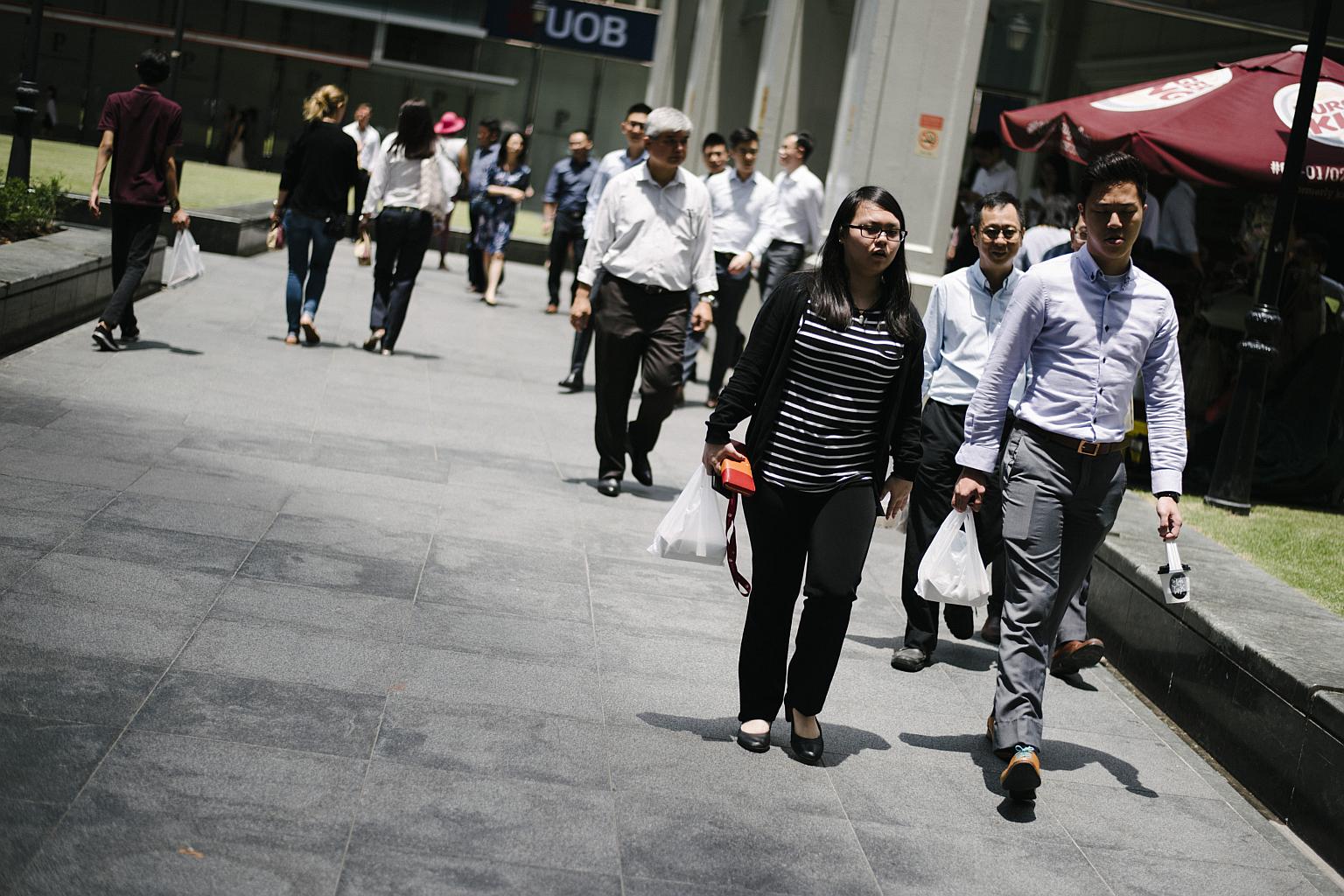Fewer foreigners, more locals in workforce last year
Employment pass holders declined for first time in at least six years, MOM data shows
Sign up now: Get ST's newsletters delivered to your inbox

Overall, 21,300 more Singaporeans and permanent residents were in jobs last year than in 2016.
ST PHOTO: ALVIN HO
Follow topic:
The number of foreigners working in Singapore fell by 32,000 last year - the biggest drop in 15 years - even as more locals were in jobs.
While the decline was mostly due to fewer work permit holders in the construction and marine shipyard industries, the number of skilled foreigners on employment passes (EP) also went down by 4,500.
This was the first drop in at least six years, according to the latest figures released by the Ministry of Manpower (MOM) yesterday.
Industries that employed fewer EP holders included the professional services and infocomm technology sectors. In tandem, they employed more local workers, the ministry said in its report.
The last time Singapore saw such a steep decline in the number of foreigners working here was in 2002, when it plunged by 43,000.
This time, weaknesses in both the construction and marine shipyard industries played a key role, said MOM, pointing to poor demand for oil rigs.
But observers also said there has been some success in the Government's effort to build a so-called "Singapore core" in the workforce - by both tightening foreign manpower policies and upgrading the skills of local workers.
"The policy measures have helped improve employment prospects for resident workers," said DBS economist Irvin Seah.
Overall, 21,300 more Singaporeans and permanent residents were in jobs last year than in 2016. As a result, they made up a slightly bigger share of the workforce - at 67.2 per cent, up from 66.4 per cent.
The workforce, excluding maids, stood at 3.42 million in December.
The shifting composition follows a tightening of foreigner hiring rules in Singapore in recent years. For example, the qualifying salary for EP holders was raised to $3,600 a month last year, up from $3,300. This year, it was announced that the qualifying cut-off for semi-skilled foreigners here on S passes will go up from $2,200 to $2,400.
To cope, businesses are turning more to locals, said Singapore National Employers Federation executive director Koh Juan Kiat. He said more of its members used government schemes to hire and train local workers in the past year.
Recruiters like ManpowerGroup Singapore and Adecco Singapore said they see some companies opting to train their existing workforce instead of hiring new foreign manpower to fill the skills gaps.
Some are chafing at the bit, though. Employers have said that they are unable to find locals to fill certain roles, especially in high-tech areas such as artificial intelligence and data analytics. In response, MOM said last week that it exercises some flexibility in assessing EP applications from firms that, among other conditions, plan to develop such skills among locals.
The development comes against a backdrop of improving job prospects for locals all round.
Overall, the seasonally adjusted unemployment rate dropped a notch, from 2.2 per cent in December 2016 to 2.1 per cent a year later.
For Singaporeans, it dropped from 3.4 per cent to 3 per cent, while for Singaporeans and permanent residents combined, it fell from 3.2 per cent to 3 per cent.
Long-term unemployment, the proportion of the resident labour force unemployed for at least 25 weeks, remained at 0.8 per cent.
MOM said local employment is likely to continue to grow this year, in line with expected economic growth of between 1.5 per cent and 3.5 per cent. But the opportunities will likely be uneven, with more hiring in sectors such as manufacturing, infocomms and media, logistics and wholesale trade, it said.
It called on employers to "focus on upgrading jobs and wages through better productivity and job redesign, in order to attract higher-skilled and younger locals", as more older rank-and-file workers will be retiring .

